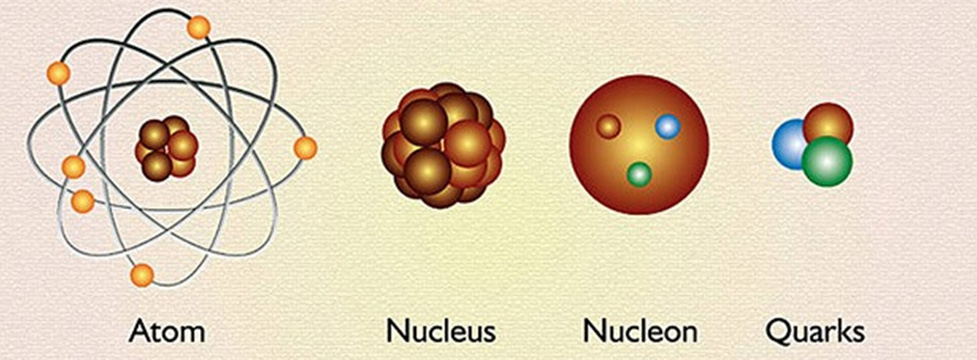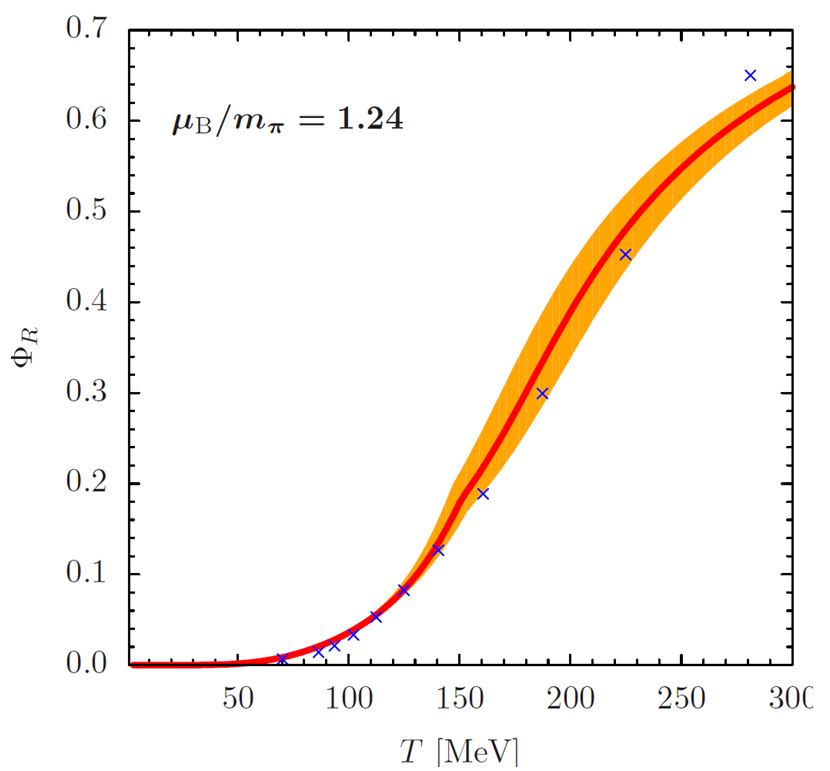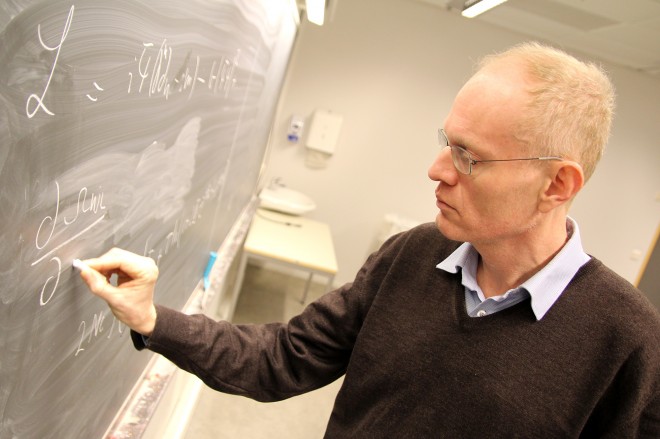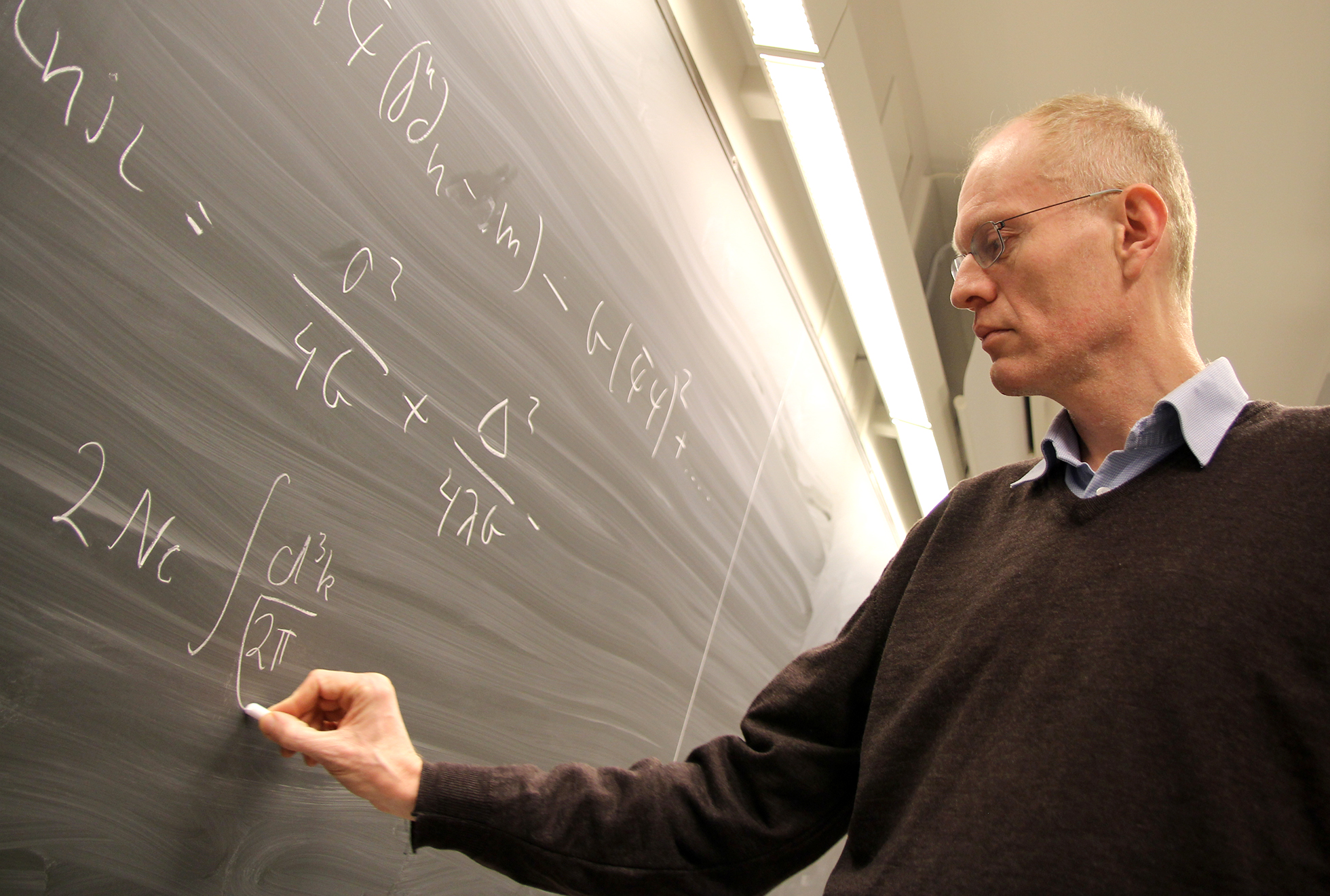We are looking into the very deep of the stars resulting from supernova explosions. Through our work, we have found a new way of understanding the interaction between quarks – the atoms’ smallest building blocks.
Atoms are the building blocks of matter. They consist of a nucleus with electrons moving around. The nucleus is built out of neutrons and protons (nucleons), which again are built out of quarks, see Figure 1. Quarks can have three different color charges (analogous to electric charge), red, green, and blue.

Quark matter in neutron stars
When a giant star explodes, its core collapses. The protons and electrons essentially melt into each other, and a neutron star consisting mainly of nucleons is formed. Nucleons are extremely densely packed: A neutron star has a mass of 1-2 solar masses and a radius of only about 10km.
Or put differently, if a cricket ball were made of neutron star material it would weigh about 40 times the estimated weight of the entire human population.
Normally, quarks are bound in nucleons. However, when nucleons are squeezed hard enough together, the individual nuclei lose their identity, and the quarks move freely around. This is called quark matter.
As a result of the total collapse the neutron star has undergone, quark matter can possibly be found deep inside them. The properties of neutron stars depend heavily on whether quark matter is present in the core of the star or not.
How to understand quark matter
The quarks and their interactions are described by a theory called Quantum Chromodynamics (QCD). In practice, a direct application of QCD to calculate the properties of three-color quark matter is technically not yet feasible. Hence one must resort to models to simplify the problem.
From three colors to two
It turns out that we can use QCD directly to calculate the properties of quark matter, if we imagine a world where quarks only come in two colors. This technique is a numerical method and is called lattice simulations.
Adapted model
In a world of two-color QCD, we can compare quark-matter properties from lattice simulations with those from model calculations. In our recent paper (lenke) we have done exactly this. Generally, we obtain good agreement between the lattice results and our results.
Figure 2 shows one of the properties that we have calculated, namely the so-called Polyakov loop. This is a measure of how free the quarks are. Depending on the temperature, the Polyakov loop varies between zero for bound quarks and one for completely free quarks. The blue crosses are the data points from lattice simulations and the red curve shows the result from the model calculations, with uncertainty (yellow).
New insights in quark matter
It is straightforward to translate our model from two colors to three colors, and therefore we believe that our results ultimately will give us additional insight into quark matter in the real world and perhaps increase our understanding of neutron stars.

Our work is published in Physical Review D: Confronting effective models for deconfinement in dense quark matter with lattice data Authors: Jens O. Andersen (NTNU), Tomáš Brauner (UiS), and William R. Naylor (NTNU).

